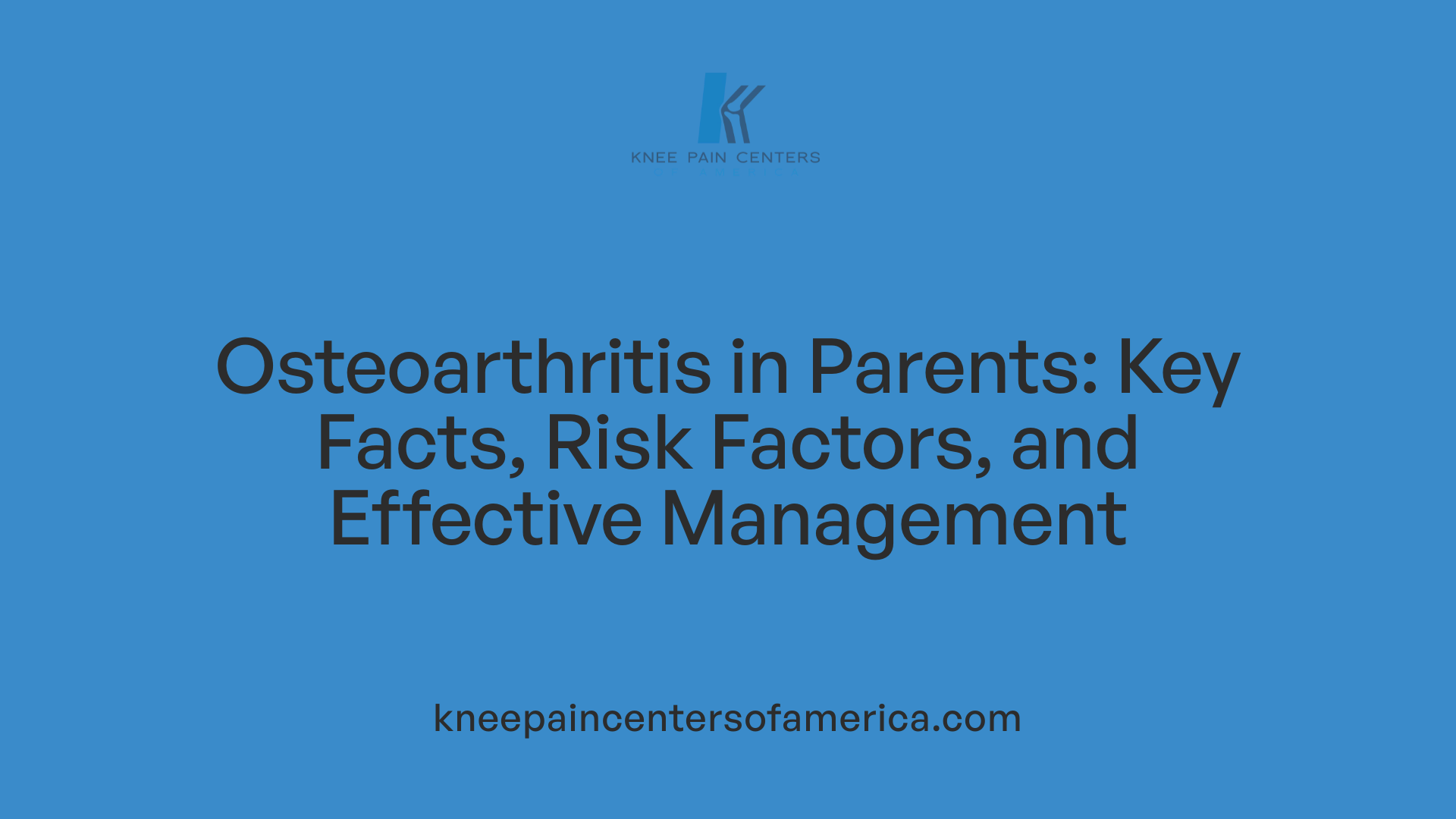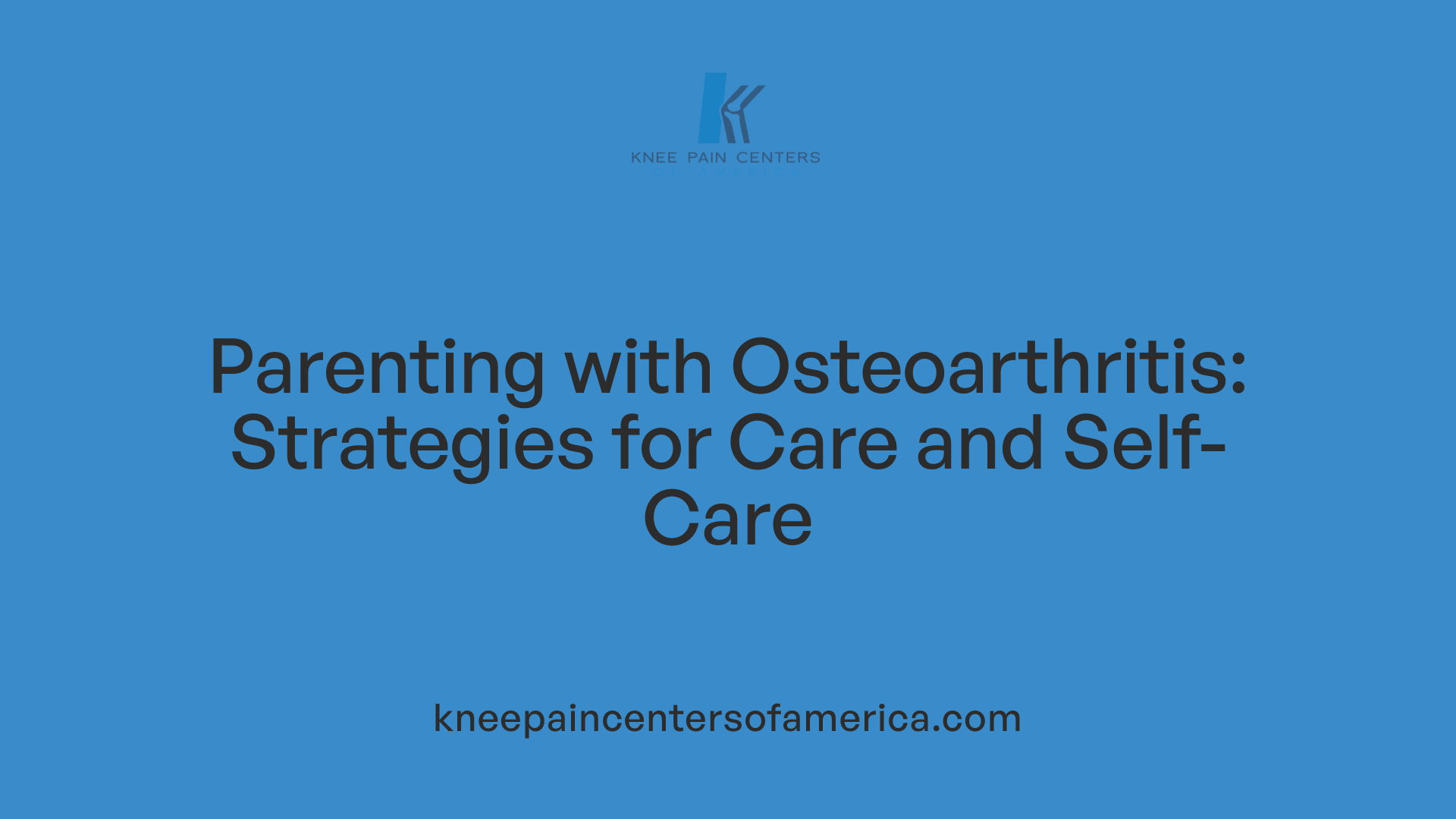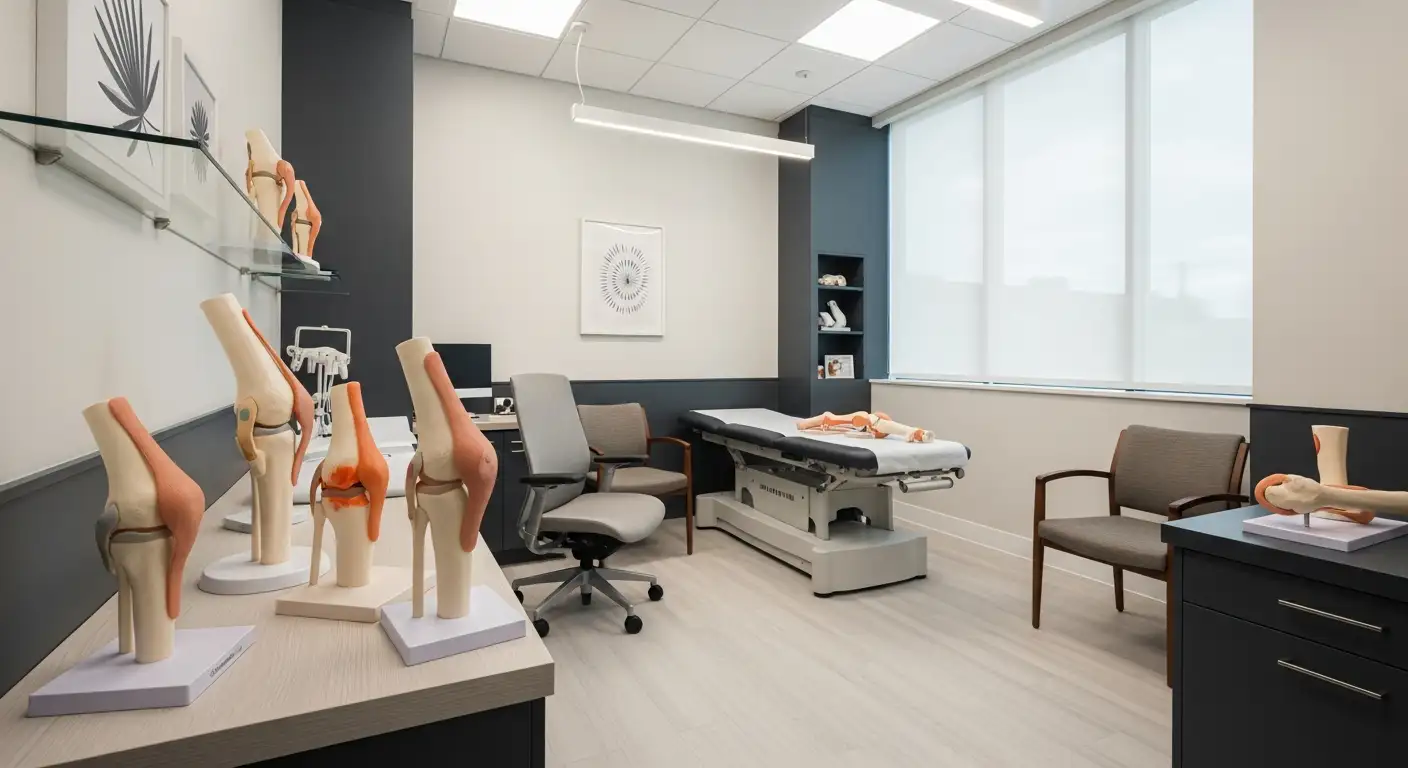Navigating Parenthood with Osteoarthritis
Managing osteoarthritis while caring for young children presents unique challenges that require a combination of medical management, lifestyle adjustments, and emotional resilience. This article explores practical ways for parents to maintain joint health, perform daily activities safely, and support their children's understanding of health conditions, all while fostering a nurturing family environment.
Understanding Osteoarthritis in Parents: Symptoms, Causes, and Treatments

What are the key symptoms, causes, and treatment options for osteoarthritis in parents?
Osteoarthritis often affects parents by causing noticeable pain and stiffness in the affected joints. Common symptoms include aching joint pain, swelling, tenderness, and a decreased ability to move the joint freely. These symptoms are often worse after physical activity or first thing in the morning when the joints are least active. Over time, parents may experience increased difficulty in performing daily activities such as lifting children, bending, or standing for extended periods.
The condition arises primarily from the breakdown and deterioration of cartilage, which normally cushions the ends of bones within joints like the knees, hips, hands, and lower back. As cartilage wears away due to age or stress, bones may begin to rub against each other, leading to inflammation, pain, and joint damage.
Several factors contribute to the development of osteoarthritis in parents. Age is a significant risk factor as cartilage repair diminishes over time. Being overweight or obese increases stress on weight-bearing joints and promotes inflammation, exacerbating symptoms. Past joint injuries or repeated stress from activities like lifting children, gardening, or exercising can also accelerate cartilage breakdown. Genetics play a role, with some families having a predisposition to joint degeneration.
Diagnosis typically involves a physical exam to assess joint swelling, tenderness, and range of motion. Healthcare providers may order X-rays or MRI scans to visualize cartilage loss, bone spurs, and joint space narrowing. Blood tests are usually done to exclude other forms of arthritis.
Treatment strategies aim to reduce pain, improve joint function, and prevent further damage. Over-the-counter pain relievers such as NSAIDs help decrease inflammation and discomfort. Physical therapy can strengthen muscles around affected joints, providing better support and stability.
Weight management is crucial; losing excess pounds reduces joint stress, relieving symptoms and slowing progression. Supportive devices like braces, splints, or canes can help minimize joint strain during activities. In more severe cases, surgical interventions such as joint replacement or arthroscopy might be considered to restore joint function.
Although osteoarthritis cannot be cured, these approaches empower parents to manage their symptoms effectively, maintain independence, and continue engaging fully with their children. Proper management improves quality of life, allowing parents to stay active and supportive family members.
Lifestyle Modifications for Managing Osteoarthritis

What lifestyle modifications can help manage osteoarthritis symptoms?
Managing osteoarthritis effectively requires a combination of lifestyle changes that focus on reducing joint stress, alleviating pain, and improving overall health. Engaging in regular low-impact exercises such as walking, swimming, yoga, or Tai Chi can strengthen supporting muscles, enhance joint flexibility, and reduce stiffness and pain. These activities are gentle on the joints while promoting mobility.
Maintaining a healthy weight is paramount, especially for those affected by weight-bearing joint issues like the hips and knees. Losing even a small amount of excess weight can significantly decrease the load on affected joints, slow disease progression, and improve quality of life. Implementing a balanced diet rich in anti-inflammatory foods, such as fruits, vegetables, and omega-3 fatty acids, can complement weight management efforts.
Protection of the joints involves pacing daily activities to avoid overexertion, using assistive devices like braces or supports, and avoiding repetitive stress or excessive pressure on affected joints. Simple modifications like using ergonomic tools and avoiding heavy loads can make a substantial difference.
Applying heat or cold therapy can temporarily reduce pain and inflammation. Heat pads or warm baths help relax tense muscles, while cold packs mitigate swelling and numb areas of pain, providing quick pain relief and improving comfort.
In addition, relaxation techniques such as meditation, deep breathing, and mindfulness, along with maintaining good sleep hygiene, contribute to overall well-being. Incorporating an anti-inflammatory diet—rich in foods that reduce inflammation—supports joint health and helps manage symptoms.
By making these lifestyle adjustments, individuals with osteoarthritis can improve joint function, reduce discomfort, and maintain an active, independent lifestyle. Continual dialogue with healthcare providers ensures personalized and effective management strategies.
Performing Daily Activities Safely with Osteoarthritis

What practical advice is available for performing daily activities safely with osteoarthritis?
Living with osteoarthritis can make simple daily tasks challenging and sometimes painful. However, several practical strategies can help individuals perform their routines while minimizing joint stress.
A fundamental approach is to adapt movements to reduce strain on affected joints. For example, when performing tasks like lifting or bending, it is recommended to use proper techniques such as bending from the hips and knees rather than stooping shoulders. This protects your back and reduces joint pressure.
Using supportive tools and assistive devices is highly beneficial. Items like braces, orthotic insoles, ergonomic aids, and special utensils can help maintain proper joint alignment and stability. For parents, lightweight prams, feeding supports, and baby carriers designed for arthritis-friendly use can ease the physical load.
Good posture and activity pacing are also vital. Sitting correctly, avoiding prolonged standing or repetitive movements, and taking regular breaks help prevent overexertion. Balancing periods of activity with rest allows joints to recover and reduces discomfort.
Incorporating heat or cold therapy into your routine can alleviate pain and stiff joints. Warm packs or baths can soothe tight muscles, while cold packs can reduce inflammation. Relaxation techniques such as deep breathing or gentle stretching can also ease muscle tension.
Seeking personalized advice from healthcare professionals ensures that adaptations suit your specific condition. Occupational therapists or physical therapists can recommend tailored exercises, ergonomic adjustments, and joint protection strategies.
Maintaining an active lifestyle through low-impact activities is crucial. Exercises like walking, cycling, swimming, yoga, or Tai Chi strengthen supporting muscles, improve flexibility, and support joint health.
Additionally, managing weight is essential, as excess weight places extra stress on weight-bearing joints like the hips and knees. Even small reductions can significantly decrease joint pain and improve mobility.
To sum up, incorporating movement adaptations, supportive tools, proper posture, relaxation techniques, and professional guidance can empower those with osteoarthritis to perform daily activities safely, maintaining independence and quality of life.
Managing Osteoarthritis in the Context of Parenting and Family Life

How can osteoarthritis be managed while caring for young children?
Managing osteoarthritis while caring for young children requires flexibility and thoughtful planning. Parents should incorporate routines that minimize joint stress, such as scheduling activities during times when their energy levels are highest and simplifying daily tasks. Using assistive tools like ergonomic baby carriers, lightweight strollers, or adapted furniture can help reduce strain on joints.
Planning activities ahead of time and breaking tasks into manageable steps allows parents to avoid overexertion. It is essential to balance caregiving responsibilities with self-care, including regular rest and gentle exercises that strengthen supporting muscles. Seeking help from family, friends, or community resources such as childcare assistance or support groups can ease physical and emotional burdens.
Open communication with children about the parent’s condition and limitations helps foster understanding. Involving children in age-appropriate tasks promotes their independence and teaches compassion. Education about osteoarthritis and explaining controllable factors encourages children to develop empathy and resilience.
Parenting with osteoarthritis also involves accepting support when needed and adjusting expectations without feeling guilty. Maintaining a positive attitude and demonstrating coping strategies can influence children’s outlook toward health and illness. Emphasizing adaptability and emotional resilience ensures that caregiving remains effective and positive despite physical challenges.
Overall, employing adaptive strategies, leveraging support networks, and emphasizing emotional health help parents with osteoarthritis care for their children effectively. This approach not only benefits the parent’s well-being but also strengthens familial bonds and models healthy coping for children.
Supporting Families Through Challenges
Though living with osteoarthritis can pose significant challenges, especially when caring for young children, proactive management, lifestyle adjustments, emotional resilience, and support networks are vital. Parents can foster a nurturing environment by involving children in understanding the condition, maintaining open communication, and adopting practical strategies to reduce joint strain. With proper medical guidance and a positive attitude, families can navigate these challenges together, ensuring both parent and child health and well-being are prioritized.
References
- Parenting With Arthritis
- How to Pick Up Kids When You Have Arthritis
- Information for parents | Young people and arthritis
- How to Manage Your Osteoarthritis - Nationwide Children's Hospital
- Childhood Arthritis - CDC
- Parenting Young Kids When You Have Arthritis: Tips to Make Things ...
- Advice for those who have arthritis: Looking after your baby/young ...
- Childhood Arthritis | NIH News in Health
- Parenting with Rheumatoid Arthritis - Pfizer
- Pediatric osteoarthritis - Children's Health Rheumatology





